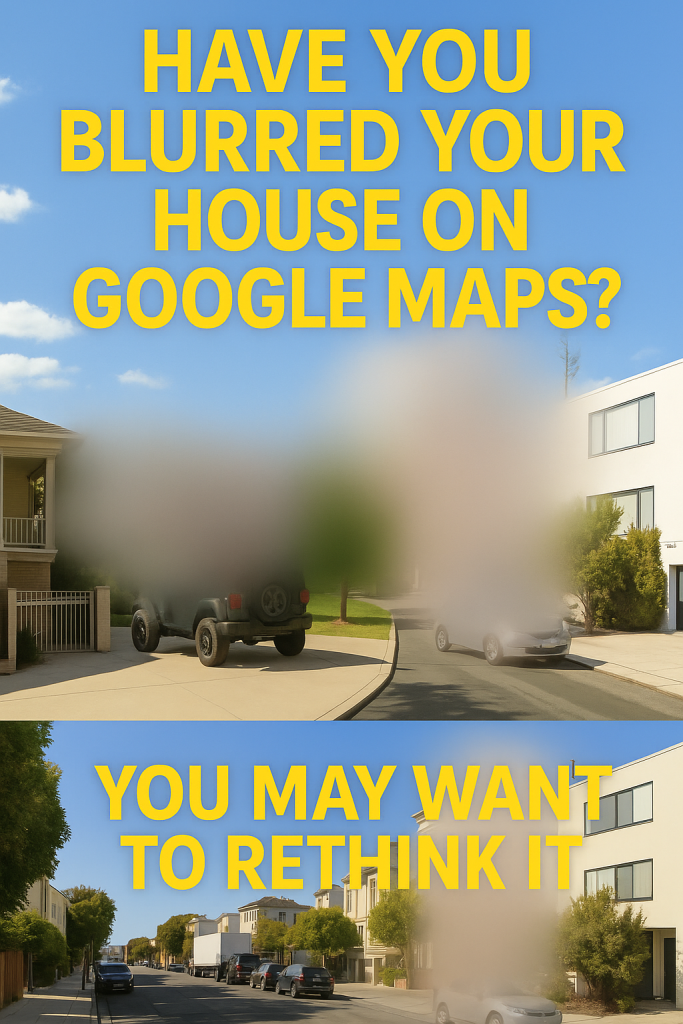In recent years, many homeowners have taken advantage of Google Maps’ feature that allows users to request their property be blurred or pixelated for privacy reasons. Originally designed to provide individuals with control over how their homes appear in the public digital sphere, this option was seen as a straightforward way to safeguard personal security. However, emerging developments in 2024 suggest that blurring your house on Google Maps may be more complicated — and riskier — than you once thought.
Why homeowners blur their houses is simple: to prevent voyeurism, protect family privacy, and reduce risks of burglary or stalking by obscuring clear images of their property. Many users felt reassured that the blurred images offered them an extra layer of anonymity in a world increasingly surveilled by digital mapping and street view technology.
But the latest information reveals an unexpected backlash associated with blurring homes on Google Maps that has sparked a growing controversy in the spring of 2024. Several security experts and digital privacy advocates warn that the practice, while well intended, can actually expose individuals to more harm than protection.
One of the primary issues is that when a property is pixelated, it essentially draws attention to itself. A blurred house stands out in contrast to clear surroundings, unintentionally signaling to potential criminals that the homeowner might be particularly concerned about privacy or security. This, experts say, can paradoxically make the property a more appealing target for burglars or trespassers who assume valuable possessions or heightened security measures within.
Moreover, some cybercriminals have learned to exploit these blurred images. By combining blurred Google Maps data with other publicly available online information — such as social media profiles and real estate listings — bad actors can piece together enough clues to locate or identify the house anyway. The blurring, while obscuring one angle of information, may encourage deeper probing from people with malicious intent.
Adding to concerns, recent reports in 2024 highlight that blurred properties have, in some cases, caused complications for emergency responders and delivery services. Emergency services rely heavily on clear and accurate digital maps for rapid response, and obscured homes can delay critical help in urgent situations. Delivery drivers and service providers may also face difficulties in locating addresses accurately, especially in high-density urban areas where visual cues are already limited.
This controversy comes amidst a broader debate on digital privacy and the role large mapping corporations play in balancing public access to geographic information and individual security. While Google and similar services uphold the right to request blurring, they also emphasize the importance of users carefully weighing these decisions against potential unintended consequences.
For homeowners wondering what to do, privacy experts recommend alternative steps to safeguard personal security without blurring your entire property on Google Maps. These alternatives include:
- Regularly monitoring your online presence and removing sensitive information that could aid perpetrators.
- Investing in visible security measures, such as alarms and cameras, which serve as deterrents.
- Requesting removal of only specific images or areas rather than the entire property view.
- Being aware of the digital footprint created through other platforms besides mapping services.
As digital mapping technology evolves and integrates further into everyday life, the choice to blur one’s home is no longer just a matter of privacy — it is a complex decision with security, emergency, and social implications. Before clicking that ‘blur’ request, it’s crucial to reconsider whether this step truly protects you or inadvertently paints a target on your home in 2024’s digital landscape.



